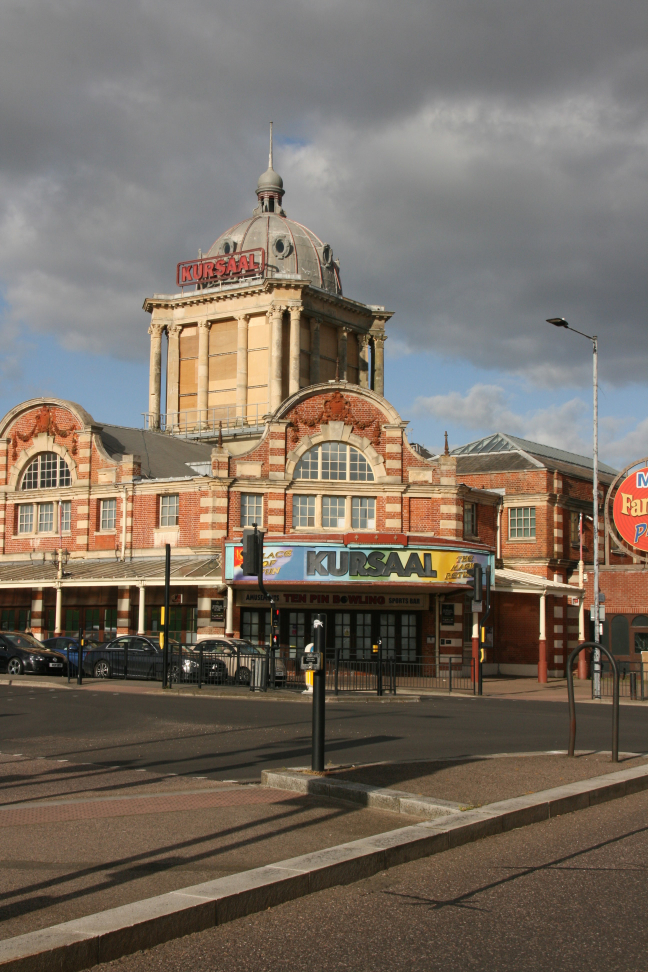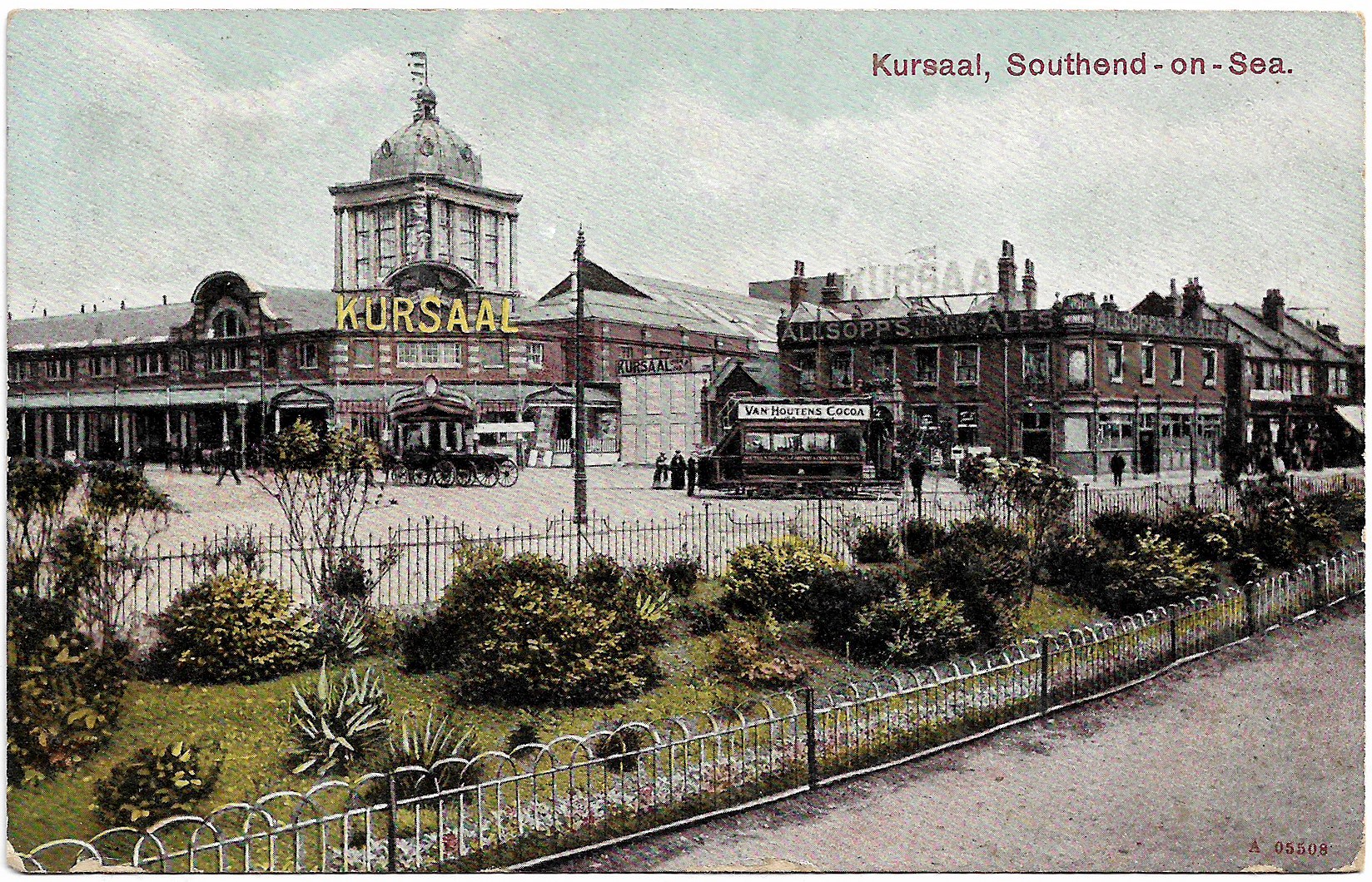The Grade II Kursaal in Southend-on-Sea, Essex, designed by George Sherrin, is on The Victorian Society’s Top Ten Endangered buildings list 2024.

Photo credit: N J Cole
Griff Rhys Jones, the Victorian Society President has launched the Victorian Society’s Top Ten Endangered Buildings list 2024. This year he has a building from his youth on the list.
Griff Rhys Jones said: ‘I love the Kursaal. It was part of my childhood. It’s an exhilarating building. An entertaining building. It is the history of Southend. It has more embedded value, commercially and collectively and as a great entertainment complex than it could ever have as a derelict site. There are problems but loads of enthusiasm. It’s time for the stakeholders to try a new approach.’’
The Kursaal Palace’s iconic tower, featured on a 2011 postage stamp, makes it an East Anglian landmark. Believed to be the world’s first purpose-built amusement park with a circus, ballroom, arcade, dining hall, billiard room, a zoo, and an ice rink. Later it housed a casino, bowling alley, and hosted a number of major bands, including AC/DC. Now only a Tesco Express occupies a small part of the building. The locals have fond memories of the Kursaal. They, and the Council, want the leasehold back so it can revert to use for concerts, markets and community events.
The Kursaal, built between 1898-99, is George Sherrin’s major work outside London. He is notable for having finished the dome of the remarkable Oratory church in South Kensington, after which the dome of the Kursaal is the only one he subsequently designed. In its official listing for the building, Historic England describes the Kursaal as “the principal architectural monument to Southend’s Edwardian boom period.” The striking, monumental treatment of the dome and its glazed tower makes a bold statement both from the esplanade and from out at sea. The building is currently boarded up and its future is far from clear.
The Victorian Society’s key figures have had to intercede in Southend-on-Sea before to help save the city’s heritage. Poet Laureate, Sir John Betjeman, one of our first chairmen and a founder and first chairman of The Pier Society, a figurehead in the campaigns to protect heritage in the 1970s and 1980s, led the successful campaign to Save the Pier. Sir John’s intervention, with the memorable words “Southend is the pier, the pier is Southend”, was not forgotten by the people of Southend, and one of the trains on the revived pier train service was named in his honour. Once again another of Southend’s defining historic structures is at risk.
The German word Kursaal, meaning “cure hall” refers to the main banquet hall of a spa town. Southend’s Kursaal was the largest fairground in the south of England. When it opened in 1901 as an amusement park, to rival Blackpool, the large outdoor space beside the main landmark building hosted Southend United football games, greyhound races, and, most notably, amusement rides. The Kursaal’s Wall of Death motorcycle rides were the first such spectacle in Britain. The outdoor land was eventually sold off for housing in 1986, but the main building evolved throughout the later part of the 20th century. The Kursaal’s ballroom hosted the big dance bands of the 1920s and the 1940s and was a major heavy and then glam rock music venue, where Queen, Mott the Hoople, Ozzy Osborne and Black Sabbath, Deep Purple, Thin Lizzy, Dr Feelgood, John Cale + The Boys, Sweet, Sparks and Cockney Rebel all appeared. AC/DC paid the venue the ultimate tribute by putting a shot by rock photographer Keith Morris from their 19th March 1977 gig at the Kursaal ballroom on the cover of the international version of their 1977 album, Let There Be Rock. They were one of the last bands to play the ballroom. Despite the Save The Kursaal Campaign, the whole complex finally closed its doors in 1986. Sadly, the decaying ballroom was demolished that year. Following years of dereliction some restoration as part of a multi-million-pound redevelopment occurred, and in 1998 The Kursaal reopened. A small function suite on the site of the venue did occasionally host live bands, though that has long ceased.
Most recently the building housed a McDonald’s, a bowling alley and a casino, but these departed in 2008, 2019 and 2020 respectively, leaving a Tesco Express as the Kursaal’s sole occupier. Concrete Culture, a collective of artists, community workers, church groups and others recently formed with the aim to turn the Kursaal into a landmark multi-use space, which could be used for music and community events, markets and more. The Council, which owns the building, has since 2023 been in negotiations with the leaseholder, which has evidently not been sufficiently diligent in its care of the building. The leaseholder wants a sizeable sum to sell the leasehold back. The Council and the people of Southend-on-Sea are of one mind: they want their Palace back. We join their plea to the leaseholder to sell this landmark building back to the Council at an affordable price so that it can realise a sustainable use befitting of its splendour and history.
James Hughes, Director of the Victorian Society, said: ‘Theatrical in every sense, this building has played a major role in the story of Southend, and must play a pivotal part in its future.’
The full Top Ten list can be read here and includes a requisitioned school where author Vera Brittain nursed during WWI, the last of one of the world’s first purpose-built amusement parks, a banqueting hall for the workers, one of the first tennis pavilions in the world, and a building where the first £1m cheque was signed. The listed buildings include a Scheduled Monument and two Grade II*- listed buildings.
The list is based on public nominations from across England and Wales, and the buildings selected represent industrial, religious, domestic, and civic architecture from across the nation with unique historical and community significance and value. Nominated buildings must be dated between 1837 and 1914. The Victorian Society has announced its list of Top Ten of Endangered buildings fourteen times.

Postcard September 1918 showing Southend seafront, with horse drawn charabanc and on the right outside what used to be the Minerva pub is a Southend Corp Tramways electric tram. Thanks to Fred McLean, his 2nd great-grandfather ran the pub in the 1880s. (c) Frederick McLean